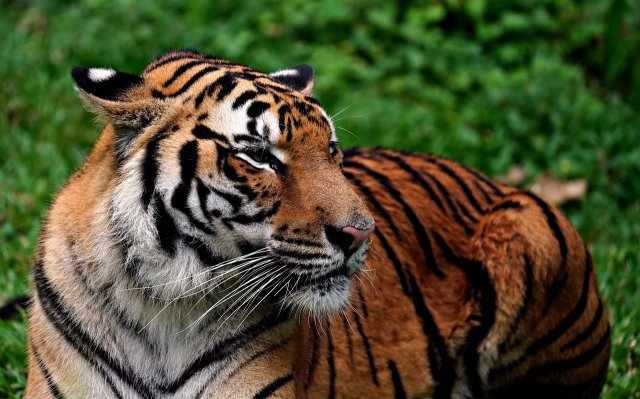Unveiling the Majestic Roamers: Tracking Tigers in Their Natural Habitat
The Thrilling Experience of Tracking Tigers in Their Natural Habitat
Tracking tigers in their natural habitat is an exhilarating adventure that allows wildlife enthusiasts to witness these majestic creatures up close. The thrill of being in the presence of these powerful predators, combined with the beauty of their natural surroundings, creates an unforgettable experience. In this article, we will explore the reasons why tracking tigers is such a thrilling endeavor and the importance of conservation efforts to protect these endangered species.
The Magnificence of Tigers
Tigers are the largest members of the cat family and are known for their striking appearance and incredible strength. With their distinctive orange coat adorned with black stripes, they are truly a sight to behold. Tracking tigers in their natural habitat provides a unique opportunity to observe their behavior and witness their hunting prowess.
These apex predators are known for their stealth and agility, making them formidable hunters. Tracking them allows us to witness their hunting techniques, such as stalking their prey and pouncing with lightning speed. It is a thrilling experience to see a tiger in action, showcasing its raw power and grace.
The Importance of Conservation
Tracking tigers not only offers a thrilling experience but also plays a crucial role in conservation efforts. Tigers are currently listed as an endangered species, with their population declining rapidly due to habitat loss and poaching. By tracking tigers, researchers and conservationists can gather valuable data on their behavior, population size, and habitat requirements.
Conservation organizations use this data to develop strategies for protecting tiger habitats and implementing anti-poaching measures. Tracking tigers also helps raise awareness about the importance of preserving these magnificent creatures and their ecosystems. When people have the opportunity to see tigers in their natural habitat, they develop a deeper appreciation for their beauty and the need to protect them.
Tracking Methods and Technologies
Tracking tigers requires specialized knowledge and equipment. Researchers and wildlife enthusiasts use various methods and technologies to locate and monitor these elusive creatures. Here are some of the most commonly used tracking techniques:
- Camera Traps: Camera traps are motion-activated cameras that capture images and videos of tigers and other wildlife. These cameras are strategically placed in areas frequented by tigers, allowing researchers to gather data on their movements and behavior.
- GPS Collars: GPS collars are fitted on tigers to track their movements in real-time. These collars provide valuable information about their home range, preferred habitats, and potential conflicts with human activities.
- Footprint Analysis: Tigers leave distinct footprints, which can be analyzed to determine their presence in an area. Footprint analysis helps researchers estimate population size and identify individual tigers based on their unique paw prints.
- Acoustic Monitoring: Tigers communicate through vocalizations, including roars and growls. Acoustic monitoring involves using specialized equipment to record and analyze these vocalizations, providing insights into their behavior and territoriality.
Advancements in technology have greatly enhanced the effectiveness of tracking methods. For example, the use of drones equipped with thermal imaging cameras allows researchers to locate tigers even in dense vegetation or during nighttime.
Case Study: Tracking Tigers in India
India is home to the largest population of tigers in the world, making it an ideal destination for tracking these magnificent creatures. The country has implemented successful conservation initiatives, such as the Project Tiger, which has helped increase tiger numbers in protected areas.
One such protected area is the Bandhavgarh National Park in Madhya Pradesh, India. This park is renowned for its high density of tigers and offers excellent opportunities for tracking. Visitors can embark on guided safaris led by experienced naturalists who are well-versed in tiger behavior and tracking techniques.
During these safaris, visitors have the chance to spot tigers in their natural habitat, observe their behavior, and learn about the conservation efforts in place to protect them. The thrill of tracking tigers in Bandhavgarh National Park is an experience that leaves a lasting impression on wildlife enthusiasts.
Summary
Tracking tigers in their natural habitat is a thrilling experience that allows us to witness the magnificence of these apex predators up close. It also plays a crucial role in conservation efforts by providing valuable data and raising awareness about the need to protect these endangered species. With advancements in tracking technologies, researchers and wildlife enthusiasts can gather insights into tiger behavior and contribute to their preservation. So, if you’re seeking an adventure that combines adrenaline and conservation, tracking tigers is an experience you won’t want to miss.
Discover the Untamed Beauty of Big Cats: Explore the Enchanting Stories of Big Cat Rescue




